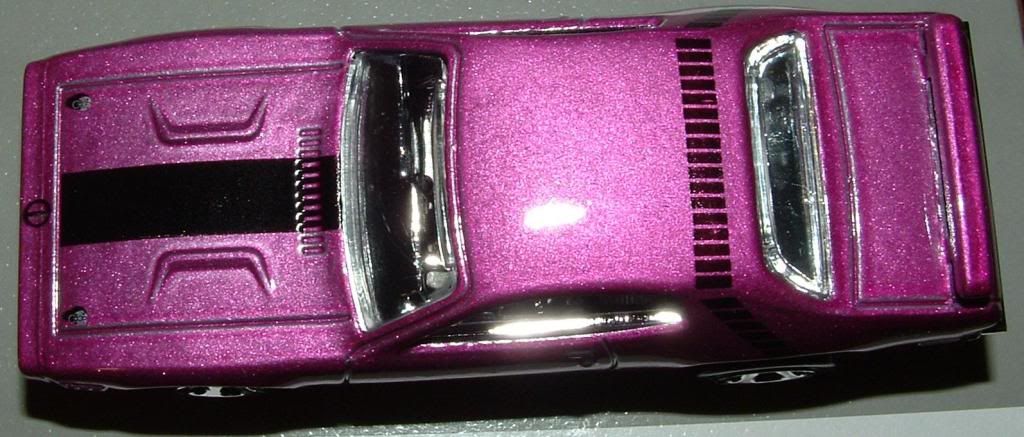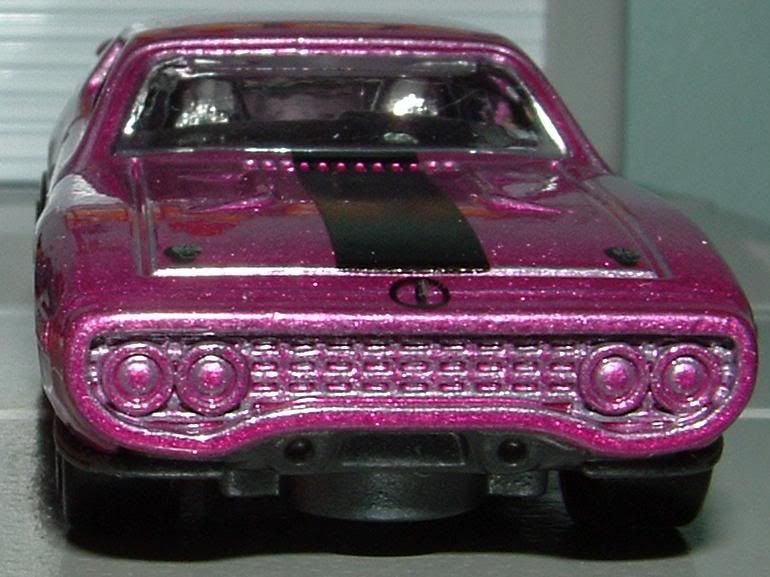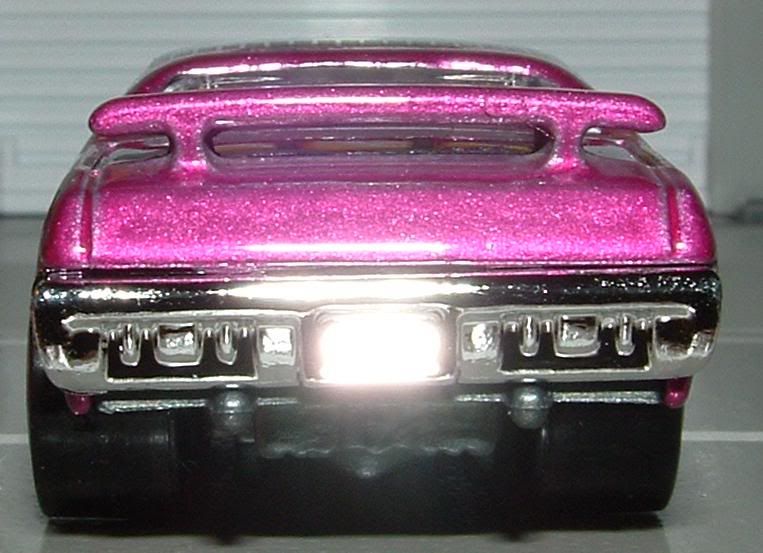
A blog focusing on 1/64 diecast from such popular brands as Hot Wheels, Matchbox, Johnny Lightning, M2 Machines, GreenLight, Tomica, Yat Ming, Majorette, MotorMax, Siku, Corgi, Guisval, Playart, Ertl, Zylmex, Racing Champions, & many more. Swifty's Garage features a daily Car Of The Day and news updates from your favorite brands!
Sunday, November 13, 2011
Car Of The Day: November 13, 2011
Today's car of the day is Hot Wheels' 1971 Plymouth Road Runner.
The Plymouth Road Runner was a muscle car built by the Plymouth division of the Chrysler Corporation in the United States between 1968 and 1980. In 1968, the first muscle cars were, in the opinion of many, moving away from their roots as relatively cheap, fast cars as they gained options. Although Plymouth already had a performance car in the GTX, designers decided to go back to the drawing board and reincarnate the original muscle car concept. Plymouth wanted a car able to run 14-second times in the quarter mile (402 m) and sell for less than US$3000. Both goals were met, and the low-cost muscle car hit the street. The success of the Road Runner would far outpace the upscale and lower volume GTX, with which it was often confused.
For more information and pictures of the real car please visit: Plymouth Road Runner
A new for 2012 issue, Hot Wheels proves once again they can still manage to find classic muscle cars they haven't covered (well) previously. I love the real car, I love this new casting, I love the color, and it's going to be hard for Hot Wheels to top this one in the 2012 Mainline.
In 1971, the coupe bodywork was completely changed to a more rounded "fuselage" design in keeping with then-current Chrysler styling trends, including a steeply raked windshield, hidden cowl, and deeply inset grille and headlights. In a departure from previous thinking, the B-Body two-door bodies shared little if any sheet metal, glass, or trim with the four-door bodies. The convertible was canceled. 1971 was a high-water year for ride and handling for the Road Runner. The overall length was decreased, but the wheelbase was increased, and a rear sway bar was used in place of staggered rear leaf springs, resulting in better handling and cornering without the stiff ride. It also saw the introduction of the 340-4bbl option, and a detuned 383 "Road Runner" engine with 8.7 compression, hardened exhaust valve seats, and power dropping to 300 HP. In return, Road Runners with the 340 and 383 engine received a standard insurance rating without the costly premiums normally tacked on to muscle cars. The 383 would now run on regular gas. Aerodynamics were much improved over the first generation Road Runners, resulting in much-improved high-speed handling. 1972 saw new emission regulations drive power down and 1/4 mile times up.
The 1972 model was nearly identical to the 1971 with a few minor changes. The grille design was cleaned up, and the tail lights were changed to match the new aerodynamic look of the grille. Side marker lights changed from the attractive, stylish, flush-to-the-body surface side markers to the cheap, protruding, smaller "Chrysler Corporate Generic" tack-ons for the 1972 model year. The optional bumper guards for 1972 included a rubber strip surrounding the tail lights and a rubber strip below the grille. The big differences came in the suspension, rear axle ratios, tire sizes, and lastly (and most noticeably), the engines, with the big-block 383 being replaced by a larger-bore (and lower performance) 400 CID version. A 440 CID engine with a 4-barrel carburetor was available. All of the engines suffered a drop in compression ratios to allow use of low-lead/no-lead gas, as well as to meet the first round of emissions regulations. The 280 hp 440 engine was the basis for the "GTX" package (as the GTX was no longer available as a separate model) that was available on Road Runners from 1972 to 1974.
Power ratings on all engines looked much lower on paper due to the new SAE net measurement system. The famed 426 Hemi was gone for 1972, and only five 440 Six Barrel equipped cars were produced before the engine option was dropped (it was determined the 440 six-pack could not meet the stricter 1972 emissions regulations) in the fall of 1971. The 1973-74 models received completely new sheet metal and had more conventional squared-up front-end styling and changes to the rear that more closely resembled the four-door models than the 71-72s. The restyling helped sales which were up 40% over the 1972 models. In testing 1/4 mile times were getting close to the 16s, top speeds had dropped to barely over 120 mph (190 km/h), and the car moved further away from "musclecar" status. The base engine for the 1973-74 models had dropped down to Chrysler's workaday 318 CID V8; however, dual exhaust (which bumped the power up to 170 hp) was still standard. After 1972, no 440 with four speed manual cars were built. The 400 was the biggest engine Plymouth offered with the four speed, which could also be had with the 340 (1973) and 360 (1974) engines. The 440 was still available for 1973 and 1974, but only mated to the 727 TorqueFlite automatic.
The 1975 model was based on the newly restyled, more formal-looking B-body which was now called the Fury (the former full-sized Fury being called "Gran Fury"). The Road Runner came with a blacked out grille and a special stripe treatment to distinguish it from the Fury. As before the 318 was the standard engine, but it was now just with a single exhaust. The 360 (220 hp) and the now largest engine was the 400 (though still with a four barrel and dual exhausts, the horsepower was down to 230) were also available. In Car and Driver magazine testing of a 1975 car with the 400 engine; 0-60 happened in 8.1 seconds and quarter-mile times were solidly in the 16-second range. While just a shadow of the 1970 figures, this performance was at least respectable for the times. Plymouth's most powerful engine, the 440, was restricted to police models, though it has been rumoured that a few were built (via special factory order) with the 240 hp (180 kW) police spec 440, and the police spec suspension and wider rims. 7,183 Road Runners were built in 1975, and most (over 50%) had just the 318 engine.
Though the name of the car the Road Runner was based on changed from Belvedere to Satellite to Fury, the Road Runner remained a B-body through 1975. While the Road Runner name was planned to be on a B-body in Plymouth's published literature for the 1976 model year, the name was transferred to an optional appearance package for the all-new Volare.
Subscribe to:
Post Comments (Atom)






No comments:
Post a Comment